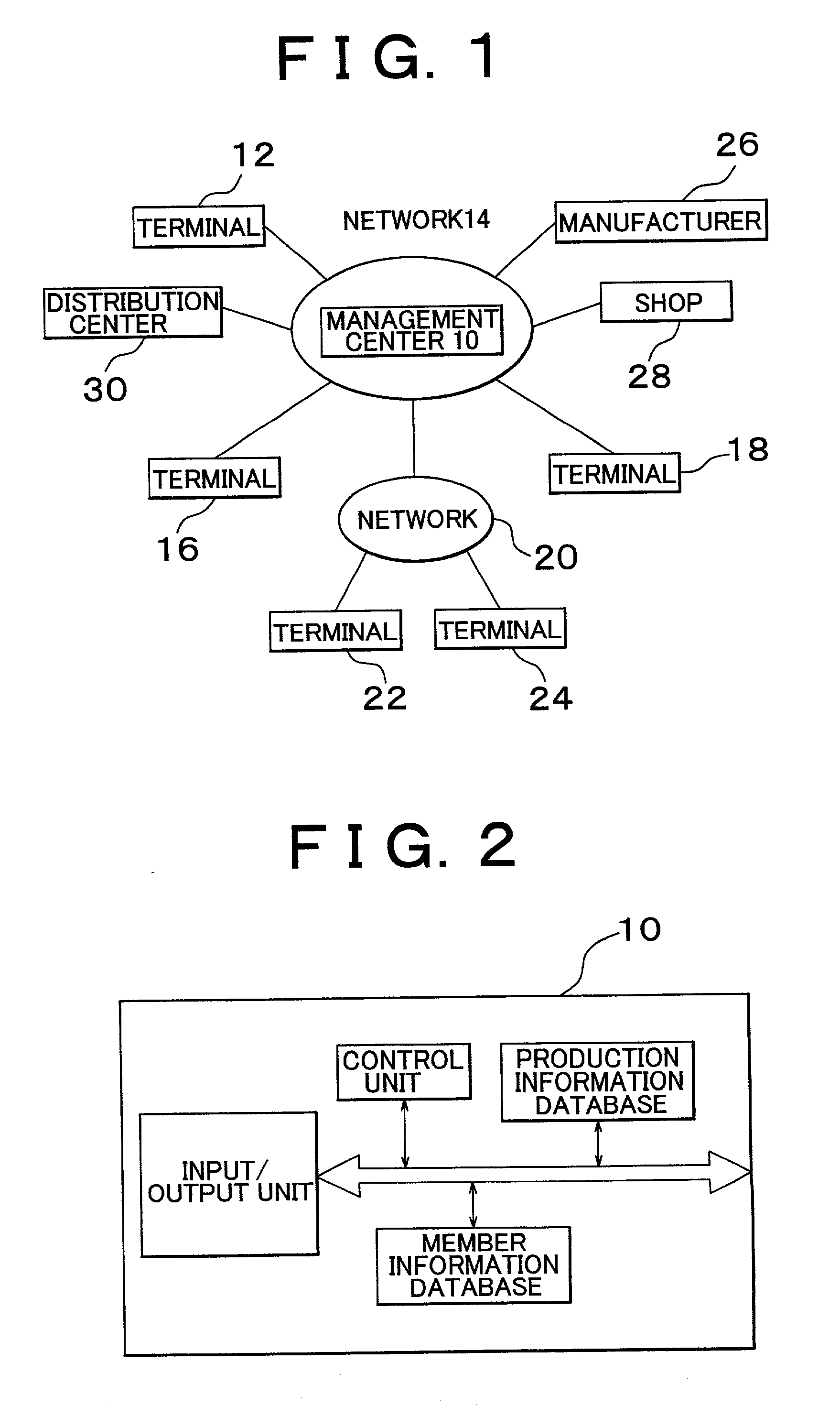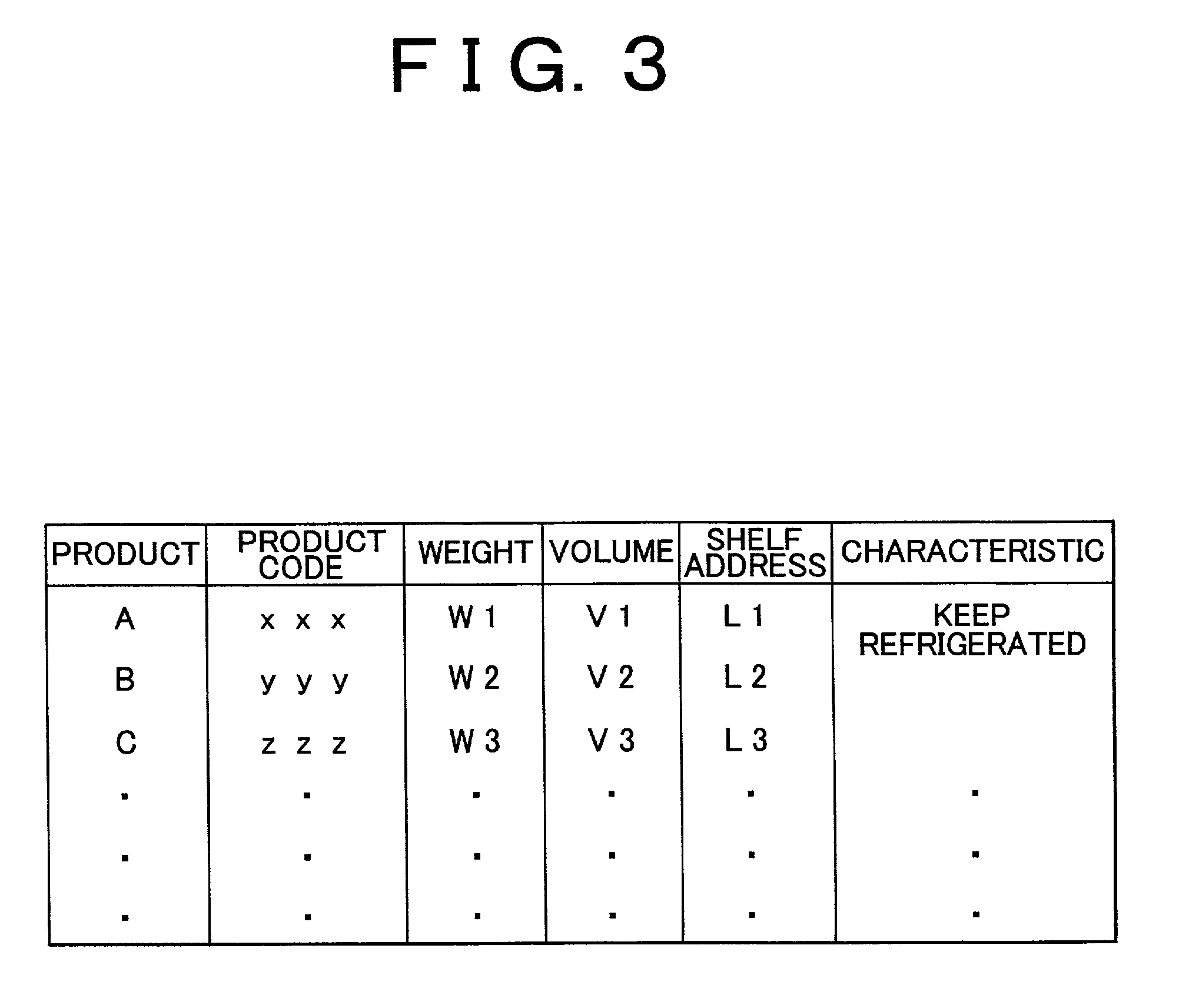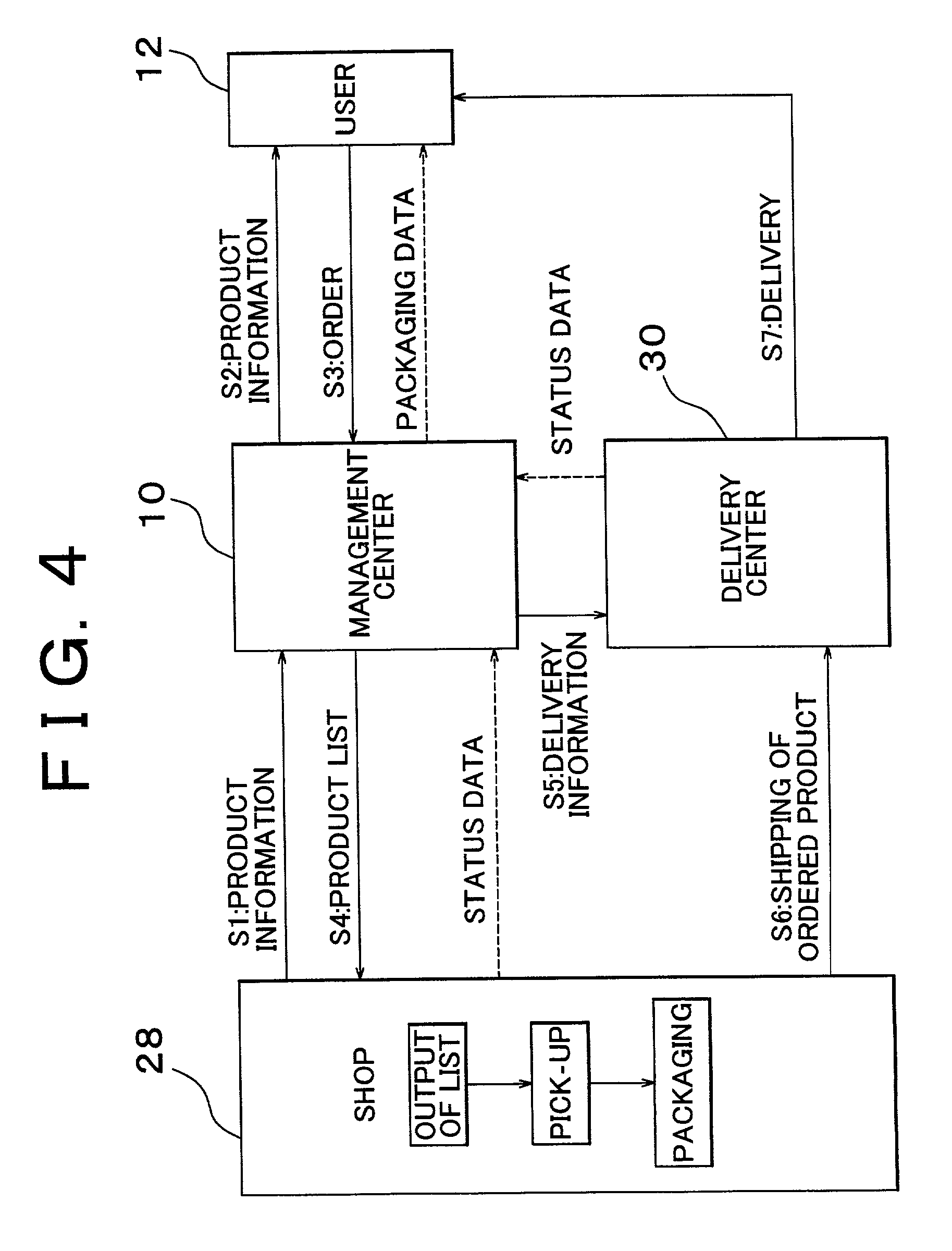[0014] In the system or method according to these aspects of the invention, the
user information is generated from private information of a new and unregistered user or from existing private information of a
registered user, and the
product selection information and the product delivery information are created by
processing the product purchase request received or the
user information. Here, the product purchase request and the
user information are controlled by a single party that manages the system, and the product selection information is supplied as needed to a party that carries products while the product delivery information is supplied as needed to a party that supplies products. Thus, while the user information including the user's private information and the product purchase request that involves privacy of the user are controlled by the party that manages the system, these pieces of information are processed or converted into other types of information to be supplied to the party that carries products and to the party that delivers the products so that these parties can perform their operations with high efficiency. It is thus possible to improve the efficiency with which the party that carries products or the party that delivers products perform their operations or activities, while preventing the user's private information from leaking outside.
[0016] In the system or method as described above, where the product purchase request comprises a request for two or more products, the product selection information preferably includes a product
list of at least one of the two or more products that can be packed in a single
package. In many cases, the user buys two or more products rather than buying a
single product. If a purchase request is made for two or more products, the system or method makes an attempt to pack these products into the same
package in order to save the time and effort to deliver the respective products separately, thus assuring high efficiency in delivery. Where the purchase request includes a plurality of kinds of products, the plural kinds of products will be packed in a single
package. Whether the products can be packed in a single package is determined not by the shop but by the management center (
server), and the product
list of the products that can be packed in a single package is supplied to the shop. This leads to a reduction in a load of the shop. Also, the shop is free from the time and effort to pack two or more products in separate packages each time a product purchase request is made, thus assuring an improved efficiency in
processing the purchase request.
[0017] Preferably, the product
list of the at least one of the two or more products that can be packed in a single package is produced on the basis of at least one of the weight and the volume of each of the products contained in the product purchase request. More specifically, the weights of the respective products are added up, and the products whose total weight does not exceed a predetermined allowable range are determined as being able to be packed in a single package. Instead or Additionally, the volumes of respective products are added up, and the products whose total volume does not exceed a predetermined allowable range are determined as being able to be packed in a single package. Naturally, it is preferable that the products are determined as being able to be packed in a single package when both the total weight and the total volume are within the allowable ranges. It is also possible for the user to specify the size of the package. Packing products in a single package is advantageous in an improved
delivery efficiency and a reduction in the shipping cost. It is also possible to construct the system in such a way as to enable the user to select a pattern that minimizes the shipping cost in terms of the number and size of packages.
[0019] Preferably, when the product purchase request comprises a request for two or more products, the product selection information includes a pick-up order in which the products are picked up. In this case, the pick-up order may be determined on the basis of locations of the respective products in the shop. Thus, the shop, which is supplied with the pick-up order designated by the management center (
server), can perform a packing operation with a further improved efficiency. The product pick-up order is determined on the basis of the locations of products in the shop so that the products can be picked up most efficiently. For example, if a purchase request is made for products "a", "b", "c" and "d", wherein the products "a" and "d" are located close to each other and the products "b" and "c" are located close to each other in the shop, these products are preferably picked up and packed in the order of "a"-"d"-"b"-"c" with improved efficiency. For the location of each product, any suitable
data format that can uniquely specify the location of the product in the shop may be employed, in addition to or instead of the shelf address of a shelf on which the product is placed. The form or format that represents the product pick-up order may be determined or selected as desired, and may differ from shop to shop. For instance, a product list of products to be transmitted to a certain shop contains product names and quantities that are written sequentially (from the top to the bottom) while a list to be transmitted to another shop contains the pick-up order that is described with
Arabic numerals. Actual operations to pick up the products according to this list may be done manually by a staff member(s) of the shop or may be done automatically with a
machine.
[0021] Preferably, the product delivery information includes a delivery order in which the products are to be delivered. For example, when two or more users make purchase requests for products, the delivery order is specified so that the products can be delivered on an
optimum route that is determined on the basis of the users' addresses included in the user information. Since the delivery order is determined by the management center (server), the load of the distributor is reduced and the delivery can be accomplished with improved efficiency. The delivery order is not limited to one for delivery to the users. Rather, the delivery order may be one in which products are collected from a plurality of shops that are supposed to ship the products. In this case, the management center defines or specifies an
optimum route on the basis of addresses of the shops carrying the products.
[0022] It is also preferable to permit the user terminal to acquire at least one of a product selection status observed at the first party, and a delivery status observed at the second party. With the status information, the user is informed of the stage in which the product(s) purchased by the user currently is / are at any time, which leads to improved convenience or ease with which the system is used. The product selection status and the product delivery status may be occasionally transmitted from the party that carries products or the party that delivers products to the management center, which in turn transmit the status information to the user in response to a request from the user terminal.
 Login to View More
Login to View More  Login to View More
Login to View More 


